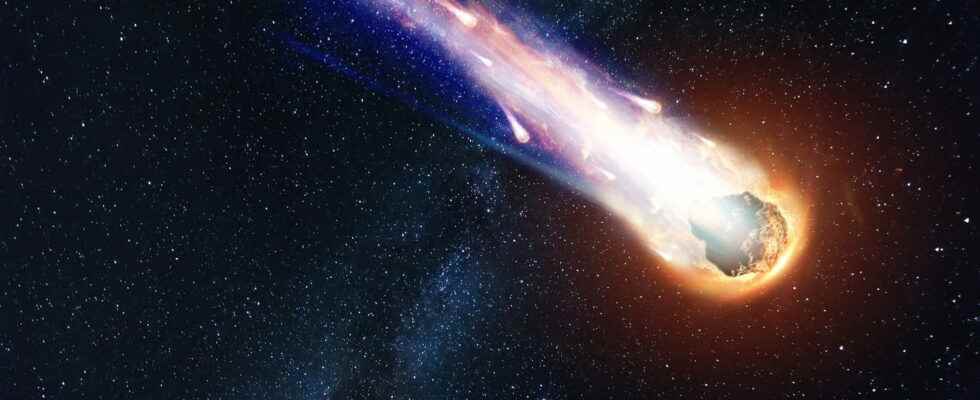METEORITE. The asteroid that exploded upon entering the atmosphere on February 12 has been observed in France, England and Belgium. Three days later, a 5 cm fragment was found in Normandy by a group of enthusiasts.
[Mis à jour le 21 février 2023 à 12h34] On February 12, an asteroid was spotted by a Hungarian astronomer who quickly raised the alarm. Seven hours later, many amateurs scanning the sky in search of the object could observe this fireball crossing the sky in the form of a particularly luminous shooting star. The asteroid, named 2023 CX1 by NASA, then fragmented into smaller pieces which ended up in Normandy around Dieppe. It was enough to arouse the curiosity of space enthusiasts who organized themselves to comb the territory in search of these pebbles fallen from the sky.
On February 17, 2023, it was finally an art student belonging to a group of researchers and amateurs who discovered the first piece of asteroid in a field in Normandy. The meteorite measures approximately 5 cm and weighs 100 grams. Brigitte Zanda, researcher at Natural History Museum, explains that this is a first in Europe. “What is particularly interesting is that the object was observed before falling, we have all its history”, she rejoices, reports the newspaper The world. The fragment whose age is estimated at 4.5 billion years would be older than our planet and should be studied soon.
Thanks to the numerous observations made in France, Belgium and England and to the testimonies which have multiplied on social networks, the scientists have been able to model the trajectory of the asteroid which crossed the sky on February 12. It would be an asteroid whose trajectory which revolved around the Sun met that of Mars and the Earth. The last time the asteroid had passed close to Earth dates back to the year 2000. It would be a small asteroid which must have measured about 1 meter in diameter.
Exceptional! We found a fragment of the asteroid that hit the sky of Normandy on Monday February 13
How was it found? Why is this meteorite historic? Full story of discovery https://t.co/C2zkLTkjIF– Sky & Space (@cieletespace) February 16, 2023
What is a meteorite?
A meteorite is a rocky body of extraterrestrial origin. It is an object which did not completely disintegrate while crossing the atmosphere and which is found on the ground. We speak of a meteorite both for the rocky bodies found on Earth and on other stars such as the Moon or the planet Mars, for example.
Meteorites can be found all over the planet, but some areas are better than others for finding them. This is how many meteorites have been collected in the Sahara desert or in Antarctica. In these environments devoid of vegetation and rocks, it is much easier to spot a fragment of rock on the ground than in the forest or in the mountains.
What is the composition of a meteorite?
Meteorites are composed of iron, rocks, or both. This composition translates the history of the meteorite and in particular of the asteroid or the body from which it originated. It is this composition that makes it possible to classify meteorites into different categories.
What is the difference between meteorite and meteor?
Unlike a meteorite, a meteor is a body that has completely disintegrated while passing through the Earth’s atmosphere. While the meteorite is found on the ground, the meteor burns up as it passes through the atmosphere and can then produce a strong glow. You’ve probably seen them on summer evenings. Indeed, shooting stars are nothing but meteors!
Knowing how to tell the difference between a simple pebble and a meteorite that has fallen in your garden is not easy. However, there are a few signs that help identify a meteorite. This type of rock has flat faces and non-protruding, blunt edges. The crust is black in color due to the melting that took place during its passage through the atmosphere. And when you weigh them, meteorites are usually heavy for their size.
